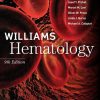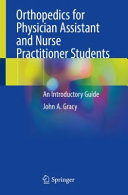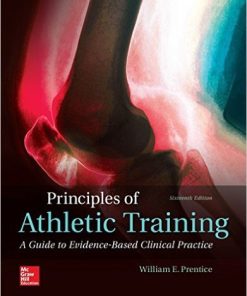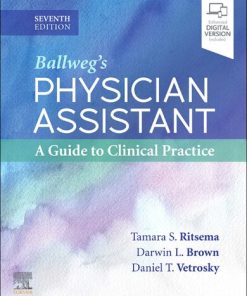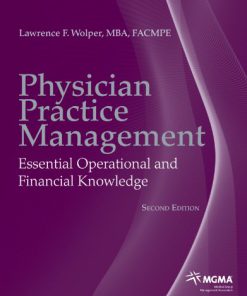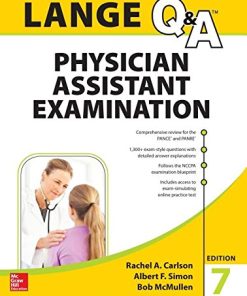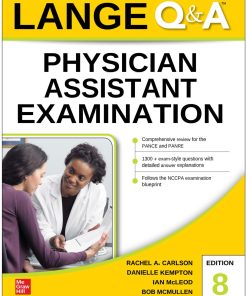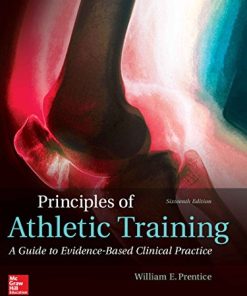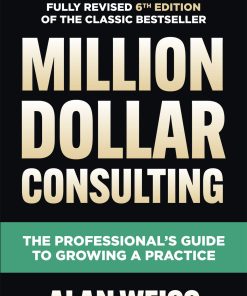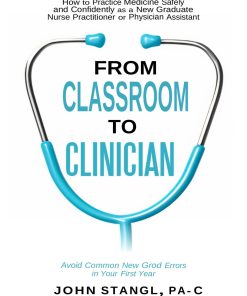(Ebook PDF) Physician Assistant A Guide to Clinical Practice 6th Edition by Daniel Vetrosky, Darwin Brown, Ruth Ballweg, Tami Ritsema 0323527418 9780323401128 9780323527415 full chapters
$50.00 Original price was: $50.00.$25.00Current price is: $25.00.
Physician Assistant: A Guide to Clinical Practice 6th Edition by Daniel Vetrosky, Darwin Brown, Ruth Ballweg, Tami Ritsema – Ebook PDF Instant Download/DeliveryISBN: 0323527418, 9780323401128, 9780323527415
Full download Physician Assistant: A Guide to Clinical Practice 6th Edition after payment.

Product details:
ISBN-10 : 0323527418
ISBN-13 : 9780323527415, 9780323401128
Author: Daniel Vetrosky, Darwin Brown, Ruth Ballweg, Tami Ritsema
Entering its 6th edition, Physician Assistant: A Guide to Clinical Practice is the only text that covers all aspects of the physician assistant profession, the PA curriculum, and the PA’s role in clinical practice. It is designed as a highly visual and practical resource to be used across the spectrum of lifelong learning, enabling students and practicing PAs to thrive in a rapidly changing health care system.
Physician Assistant: A Guide to Clinical Practice 6th Table of contents:
Section I. Overview
Chapter 1. Maximizing Your Physician Assistant Education
Overview and Introduction
Chapter 2. History of the Profession and Current Trends
Feldshers in Russia
China’s Barefoot Doctors
Developments in the United States
Developments at Duke University
Concepts of Education and Practice
Military Corpsmen
Other Models
Controversy about a Name
Program Expansion
Funding for Programs
Accreditation
Certification
Organizations
Trends
National Health Policy Reports
Current Issues and Controversies
Conclusion
Clinical Applications
Chapter 3. International Development of the Physician Assistant Profession
Canada
United Kingdom
The Netherlands
Liberia
India
Ghana
South Africa
Australia
Kingdom of Saudi Arabia
Federal Republic of Germany
New Zealand
Afghanistan
Israel
Bulgaria
Republic of Ireland
Where Next?
Chapter 4. Physician Assistant Education: Past, Present, and Future Challenges
Overview of Physician Assistant Education
Brief History of Physician Assistant Education
Characteristics of Physician Assistant Education
Current Issues in Physician AssiStant Education
Looking Forward: Emerging Issues
Conclusion
Chapter 5. Safety in Clinical Settings
Rotation Safety
Universal Precautions
International Travel
Needlestick and Sharps Injuries
Tuberculosis Screening
Latex Allergy
Student Mistreatment
Sexual Harassment
Patient Safety While on Rotations
Chapter 6. Assuring Quality for Physician Assistants: Accreditation, Certification, Licensing, and Privileging
Introduction
Physician Assistant Education Program Accreditation
National Certification
State Regulation: Licensure and Registration
Institutional Credentialing and Privileging
Conclusion
Clinical Applications
Chapter 7. Physician Assistant Relationship to Physicians
Historical Perspective
Shared Knowledge Base
Dependent Practice Versus Interdependent Practice
Communication, Coordination, and Continuity of Care
Delegated Scope of Practice
Autonomous Medical Decision Making
Agency Relationship
Physician Supervision: Legal Basis for Physician Assistant Practice
Change in Terminology: Collaboration
Types of Supervision and Collaborative Relationships
Impact of Changing Health Care Systems
Evolution of the Physician–Physician Assistant Relationship
Practice Ownership
Summary
Chapter 8. Health Care Financing and Reimbursement
Full Utilization of Physician Assistants Will Ensure Patient Access to Care
Government-Sponsored Programs
Private Insurance
Health Care Reform—New Models of Care Delivery
Conclusion
Clinical Applications
Chapter 9. The Political Process
Individual Responsibilities
Practice Laws
Individuals: Part of the Whole
Federal Legislative Process: How a Bill Becomes Law
State Legislative Process
Federal Regulatory Process
State Regulatory Process
Case Studies
Conclusion
Chapter 10. Interprofessional Practice and Education
Background and Rationale for Interprofessional Practice and Interprofessional Education
Barriers to Interprofessional Education
Barriers to Interprofessional Practice
Interprofessional Education Competencies
Summary
Section II. Medical Knowledge
Chapter 11. Evidence-Based Medicine
History of Evidence-Based Medicine
Evidence-Based Medicine Process
Chapter 12. Research and the Physician Assistant
What is Research?
Types of Research
Why Should Physician Assistants be Involved in Research?
Physician Assistant Students and Research
Conclusion
Chapter 13. Keeping People Healthy
Primary, Secondary, and Tertiary Prevention
Immunization Strategies
Health Determinants
Healthy People 2020
United States Preventive Services Task Force
Influencing Health Behavior Changes
Conclusion
Chapter 14. Clinical Procedures
Wounds and their Treatment
Commonly Performed Clinical Procedures
Chapter 15. Genetic and Genomic Applications in Clinical Practice
From the Genetic Age into the Genomic Age
The Diagnostic Utility of Family History Data
Genetic and Genomic Testing
Types of Genetic and Genomic Tests
Clinical Decision-Making Framework for Genetic Testing
Collaborating with Genetic Health Professionals and Lifelong Learning in Genetics and Genomics
The Physician Assistant’s Role in the Genomic Age: Putting it all Together
Chapter 16. Chronic Care Perspectives
A Need for Coordinated, Patient-Centered Care
Patient–Clinician Partnerships and Team-Based Care: a Paradigm Shift in Chronic Disease Management
Elements of the Chronic Care Model
Motivational Interviewing and Action Planning
Population-Based Chronic Disease Management
The Physician Assistant as a Member of the Chronic Care Team: an Integration of the Physician Assistant Core Competencies
New Reimbursement Models
Use of Technology in Chronic Disease Management: New Frontiers
Summary
Clinical Applications
Chapter 17. Considerations for a Logical Approach to Medication Prescribing
History of Prescription Writing
Controlled Substances
Effective Prescribing
Content of a Prescription
Evidence-Based Approach to Medical Decision Making
Pharmacology and Therapeutics
Personalized Medicine and Pharmacogenomics
Barriers to Patient Compliance
Interprofessional Collaboration with a Pharmacist
Ethical Quandaries
Conclusion
Chapter 18. Complementary and Integrative Health
Natural Products
Mind–Body Practices
Addressing Complementary and Integrative Health in Clinical Practice
Clinical Applications
Chapter 19. Geriatric Medicine
Geriatric Care
Normal Age-Related Changes
Geriatric Syndromes
Common Problems in Geriatric Care
Sexuality and Aging
Unique Issues in Geriatric Care
Community Resources and Services
Conclusion
Clinical Applications
Chapter 20. End-of-Life Issues
Truth Telling
Helping Patients Make Informed Decisions
Planning for Death
Advance Directives
Hospice
Having the Conversation
Stages of Dying
Stages of Grief
Emerging Issues
Clinical Applications
Glossary
Section III. Interpersonal and Communication Skills
Chapter 21. Communication Issues
Patient-Centered Communication
Health Literacy and Cultural Competency
Interprofessional Communication
Health Information Technology
Professionalism and Conduct
Conclusion
Chapter 22. Electronic Health Record
Development
Meaningful Use
Implementation
Benefits and Barriers to Implementing Electronic Health Records
Security
Safety
Clinical Applications
Chapter 23. Patient Education
Barriers to Patient Education
Providing Structure for Effective Patient Education
Chapter 24. Providing Culturally Competent Health Care
Cultural Competence
Introduction to Culturally Competent Practice
Rationale
Bias and Stereotyping
Cognitive Errors in Decision Making
Knowledge, Skills, and Attitudes
Language Barriers
Special Populations
Conclusion
Section IV. Patient Care: Clinical Rotations
Chapter 25. Family Medicine
Physician Assistants in Family Medicine: A Brief History
History Repeats Itself
The Specialty of Family Medicine
The Family Medicine Clinical Rotation
Common Medical Procedures in Family Medicine Practices
The Benefits of Practicing Family Medicine
Conclusion
Chapter 26. Internal Medicine
Physician Assistants in Internal Medicine
Other Health Professionals
Patients and Special Populations
Challenges And Rewards
Chapter 27. Women’s Health
Approach to the Patient
What to Expect on Clinical Rotations
Expectations for a Successful Rotation
Clinical Information
Promotion of Wellness
How to Approach the Diverse Patient
Student and Faculty Resources
Student Tips
Student Comments
Physician Assistant Roles in Obstetrics and Gynecology
When to Refer
Special Challenges
Rewards of Working in Obstetrics and Gynecology
Conclusion
Chapter 28. Pediatrics
History
Pediatric Rotations
Well Child Visits and Immunizations
Ambulatory Pediatrics
Hospital Pediatrics
Foster and Adopted Children
Newborns
Failure to Thrive
Oral Health
Developmental Disabilities
Behavioral and Mental Health Disorders
Chronic Disease
Chapter 29. Behavioral Science and Medicine: Essentials in Practice
History of Mental Illness
Myths and Stigmas Attached to Psychiatric Illness
Awareness of your Own Biases
Empathy and Rapport
The Physician Assistant–Patient Encounter
Diagnostic and Statistical Manual of Mental Disorders, 5th Edition
Expectations of Physician Assistant Students on Psychiatric Clinical Rotations
Motivational Interviewing
The Role and Future Physician Assistants in Psychiatry
Clinical Applications
Chapter 30. Surgery
How do Practitioners in a Surgical Practice Approach the Patient?
What do Physician Assistants in Surgery Typically do on a Daily Basis?
What will I be Expected to do During the Surgery Rotation?
Which Clinical Environments may I Work in During the Surgery Rotation?
Which other Types of Health Professionals will I Work with During the Surgery Rotation, and What Can I Learn from Them?
Which Clinical Information do the Physician Assistants and Physicians on the Surgery Rotation Always Want to Know About their Patients?
Which Special Populations of Patients may I See on the Surgery Rotation?
What are the Special Challenges of Surgery?
What are the Special Rewards of Surgery?
Scrubbing and Gowning and Gloving
Chapter 31. Emergency Medicine
How do Practitioners in Emergency Medicine Approach the Patient?
What do Physician Assistants in Emergency Medicine Typically do on a Daily Basis?
What will I be Expected to do on this Rotation?
Which Clinical Environments may I Work in During this Rotation?
Which Other Types of Health Professionals will I Work with on this Rotation, and What Can I Learn from them?
Which Clinical Information do the Physician Assistants and Physicians on this Rotation Always Want to Know about their Patients?
Which Special Populations of Patients may I see on this Rotation?
What are the Special Challenges of Emergency Medicine?
What are the Special Rewards of Emergency Medicine?
What Resources Might be Helpful to me on this Rotation?
Chapter 32. Elective Rotations
A. Cardiology
B. Dermatology
C. Orthopedics
D. Oncology
E. Other Medical Subspecialties
F. Other Surgical Subspecialties
Section V. Professionalism
Chapter 33. Professionalism
Understanding the Importance of Professionalism
Elements of the Physician Assistant Competency of Professionalism
Behavior Toward the Patient
Behavior Toward other Professionals
Behavior Toward the Public
Behavior Toward Oneself
Fostering Professionalism
Conclusion
Clinical Applications
Chapter 34. Clinical Ethics
Chapter Organization
What is Ethics?
Theories and Principles
Methodology
American Bioethics History
Cases
Ethics Consultation and Resources
Chapter 35. Medical Malpractice and Risk Management
What is Medical Negligence?
Other Theories of Recovery
Elements of a Lawsuit
Risk Management Techniques
Clinical Applications
Chapter 36. Postgraduate Clinical Training Programs for Physician Assistants
History of Postgraduate Residency Education
General Characteristics of Existing Programs
Residency Program Accreditation
Association of Postgraduate Programs
Residency Graduate Employment Opportunities
Selecting a Residency Program
Conclusion
Clinical Applications
Chapter 37. Dealing With Stress and Burnout
The Decision to Become a Physician Assistant
Experience of Stress in Training
Stress on the Job
Burnout
Conclusion
Clinical Applications
Section VI. Practice-Based Learning and Improvement
Chapter 38. Health Disparities
What are Health Disparities?
Health Disparities: Scope of the Problem
Clinical Applications
Chapter 39. Patient Safety and Quality of Care
Quality Care Movement in America
Types of Medical Errors
Patient Safety Strategies
Clinical Applications
Section VII. Systems-Based Practice
Chapter 40. Health and Health Care Delivery Systems
Health Systems
The U.S. Health Care System: Challenges and Innovations
People also search for Physician Assistant: A Guide to Clinical Practice 6th:
how to become a physician assistant
nurse practitioner vs physician assistant
what does a physician assistant do
how much does a physician assistant make
physician assistant school
Tags:
Physician Assistant,A Guide,Clinical Practice,Daniel Vetrosky,Darwin Brown,Ruth Ballweg,Tami Ritsema
You may also like…
Medicine - Clinical Medicine
Ballweg’s Physician Assistant: A Guide to Clinical Practice 7th Edition Tamara S Ritsema
Uncategorized
Uncategorized
Biography & Autobiography - Business & Finance
Million Dollar Consulting: The Professional’s Guide to Growing a Practice 6th Edition



